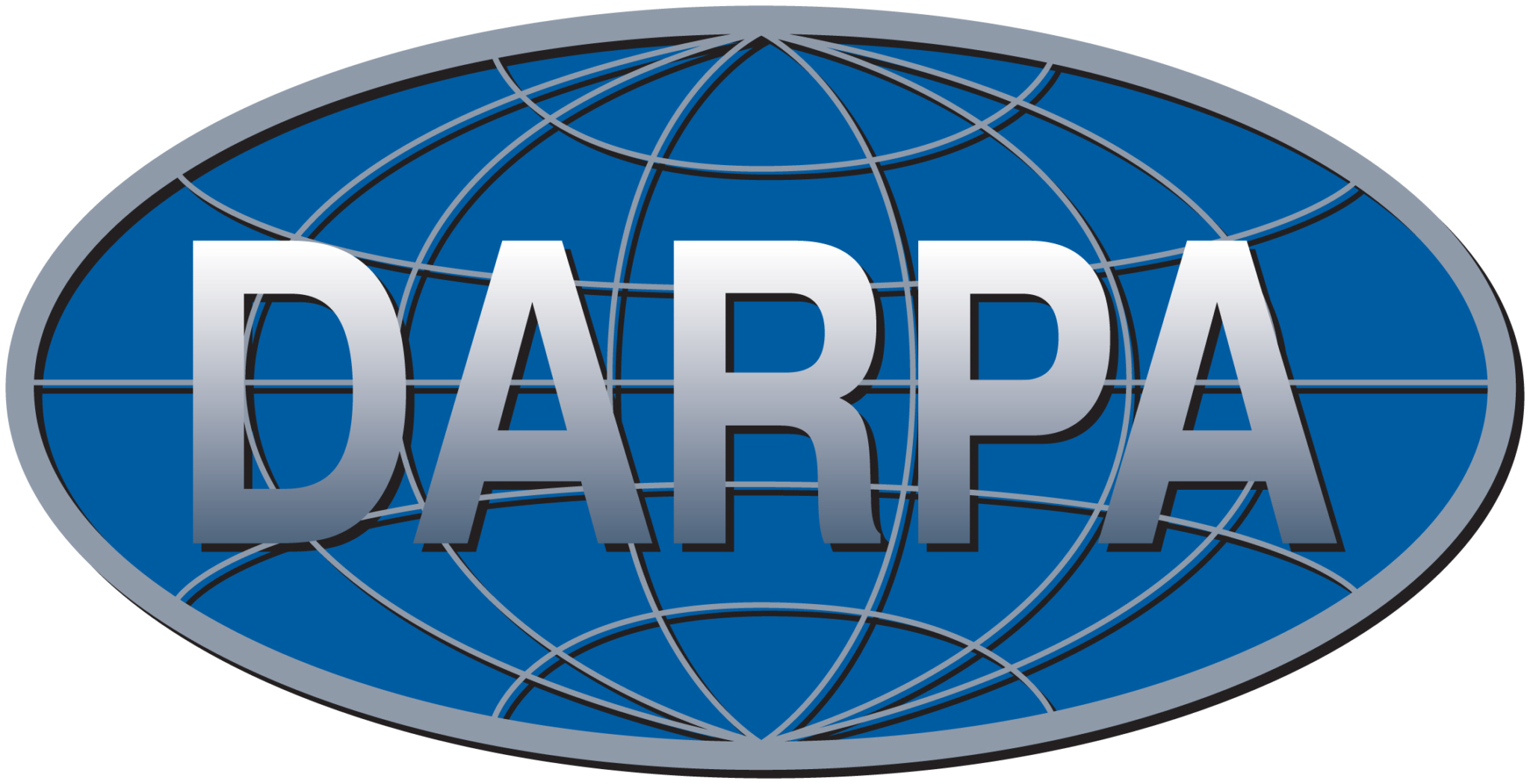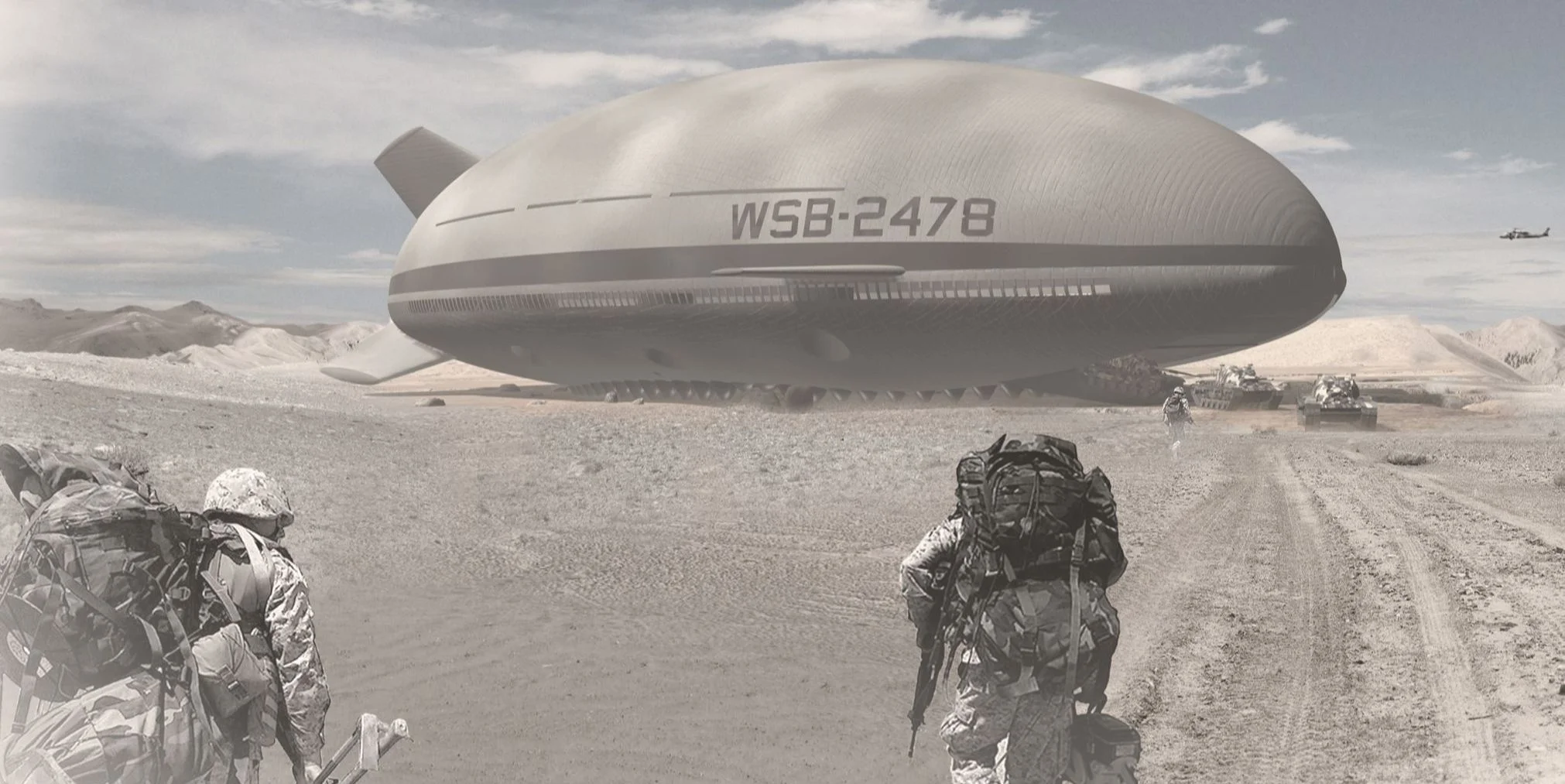DOD’S DREAM REALIZED: THE MILITARY ORIGINS OF AEROSCRAFT
For decades, military and government agencies have been seeking a solution to one of transportation’s greatest challenges: moving heavy cargo to locations with minimal or no infrastructure. In the early 2000s, the Defense Advanced Research Projects Agency (DARPA) set out to solve this problem once and for all—and from that mission, the technological pathway toward Aeros’ electric Variable Buoyancy Airship (eVBA) was first charted.
The Walrus Program: Reimagining Heavy-Lift Air Transport
DARPA’s Walrus Program was designed to bridge critical gaps in U.S. strategic airlift capabilities by creating an entirely new heavy-lift aircraft category—one capable of delivering massive payloads directly to unimproved, infrastructure-limited locations. Central to this vision was overcoming the longstanding challenge of airship buoyancy control without relying on conventional off-board ballast systems.

The $3.27 Million Contract
In mid-2005, following a highly competitive selection process, DARPA awarded two 12-month Phase 1 study contracts for the Walrus program, with plans to select a single contractor by early 2007 to build and test a demonstrator. As one of only two U.S. commercial blimp manufacturers at that time, Aeros successfully competed against major aviation and defense companies to win the contract.
Aeros’ deep specialization in airship design and engineering earned DARPA’s trust, resulting in the company receiving the program’s largest funding allocation—$3,267,000 compared to the $2,989,799 awarded to Lockheed Martin’s Advanced Development Programs (the Skunk Works).

Initial concept image of Aeros’ cargo airship
Leveraging decades of airship manufacturing expertise, Aeros proposed a groundbreaking solution: a rigid-shelled hybrid airship that is a cross between a dirigible and a plane. The concept combines helium-based buoyancy with aerodynamic lift from wings and engines, directly addressing DARPA’s strategic and operational goals through several distinctive features:
- Control of Static Heaviness (COSH):Revolutionary buoyancy management system that eliminates external ballast requirements, enabling infrastructure-independent operations in remote locations.
- Vertical Takeoff and Landing: Complete independence from runways or prepared ground support, with precise hovering capabilities during cargo transfer.
- Unprecedented Payload Capacity: Ability to transport 10-20 times the cargo of a Boeing C-17 (170,900 pound maximum).
- Rigid Aeroshell Structure: A durable, lightweight hull maintaining aerodynamic efficiency without internal pressurization.
- Direct Point-to-Point Delivery: Direct transport between any two global points, bypassing congested transportation networks.
The COSH Breakthrough
Despite promising progress, the Walrus Program was officially terminated in mid-2006, before any flight testing took place. However, for Aeros, the journey was far from over.That same year, Aeros successfully demonstrated the COSH system in a ground-based test rig.
Recognizing the potential of Aeros’ innovation, DARPA awarded a follow-on contract in October 2007, providing an additional $4 million to advance both the COSH system and the company’s lightweight rigid structure technology. As part of this effort, Aeros modified an existing Aeros 40D Sky Dragon airship, outfitting it with two inflatable collars operated by a flight-weight, onboard COSH prototype.
On July 17, 2008, Aeros announced the successful flight test of the modified aircraft, validating COSH’s operational performance in real flight conditions.
Aeros’ success with the COSH system stemmed from decades of airship expertise that earned the trust of military and government leaders. The company’s proven track record in lighter-than-air technology made it the natural partner for solving the impossible challenge of infrastructure-independent cargo delivery.
In Part 2 of this series, we’ll reveal how Aeros transformed these early innovations into the first functional eVBA prototype, bringing the dream of unlimited heavy-lift capability to life.
Story to be continued…
This “testing the waters” communication is for informational purposes only and does not constitute an offer to sell or a solicitation of an offer to buy any securities. Aeros is currently “testing the waters” to gauge potential investor interest in a possible public securities offering under Regulation A Tier 2. No investment decisions should be made without reviewing the final offering statement, which will contain important information about the investment and its risks. The Securities and Exchange Commission has not approved or disapproved of these securities.
Disclaimer: (1) no funds or other consideration is being solicited, and if money is sent, it will not be accepted by the company; (2) no sales will be performed or commitments to purchase accepted until the offering statement is qualified and any such offer may be withdrawn or revoked, without obligation or commitment of any kind, at any time before notice of its acceptance given after the qualification date; and (3) a proposed purchaser’s indication of interest is non-binding and involves no obligation or commitment of any kind.

Aeros is a global leader in designing, FAA certifying, manufacturing, and delivering advanced airships and aerostats worldwide. For over a century, airships have faced a fundamental challenge—losing stability as cargo is unloaded. Competitors have failed to solve this. Aeros has not only solved it—we’ve patented it. Like a submarine adjusting depth, our aircraft control buoyancy in real-time, enabling unrestricted logistics from transcontinental freight to last-mile delivery—without ground infrastructure. To learn more, visit www.Aeroscraft.com

